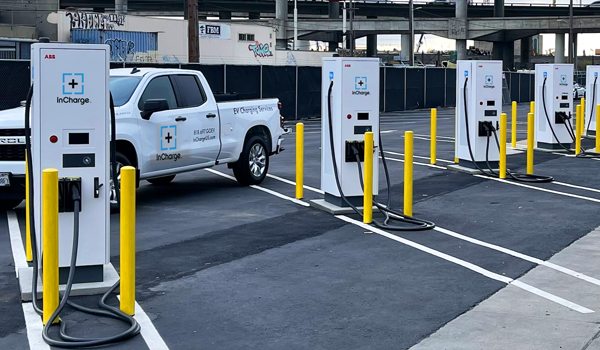Did you know that global electric vehicle (EV) sales are projected to reach over 30 million by 2030? As urban centers worldwide gear up for this electrifying transition, urban EV charging hubs are emerging as game-changers for sustainable mobility. These strategically located hubs not only alleviate the range anxiety often associated with electric vehicles but also promote a cleaner, greener commuting landscape. In this article, we’ll explore how these urban EV charging hubs are revolutionizing sustainable mobility, diving into their benefits, current trends, and future potential.
The Rise of Urban EV Charging Hubs
What Are Urban EV Charging Hubs?
Urban EV charging hubs are centralized locations equipped with multiple charging stations, designed to serve a high volume of electric vehicles simultaneously. These hubs are often situated in strategic urban areas such as shopping centers, parking lots, and public transportation nodes, providing a convenient solution for EV owners.
- Key Features:
- High-speed charging capabilities
- Integration with renewable energy sources
- User-friendly interfaces for seamless operation
According to InsideEVs, cities like London and San Francisco have already begun implementing these hubs, aiming to support the rapidly growing number of electric vehicles on the road.
Benefits of Urban Charging Hubs
Urban EV charging hubs offer numerous benefits that extend beyond just EV owners. Here are some key advantages:
- Reduced Range Anxiety: With more accessible charging options, drivers can travel longer distances without worrying about running out of charge.
- Improved Air Quality: By supporting the adoption of electric vehicles, these hubs contribute to reducing emissions and improving urban air quality.
- Economic Growth: The development of charging infrastructure creates jobs and stimulates local economies.
- Enhanced Energy Efficiency: Many hubs utilize solar panels and energy storage systems to optimize electricity usage.
A recent study by Bloomberg Green highlights that cities with advanced charging infrastructure experience a 30% increase in EV adoption rates compared to those without.
Current Trends in Urban EV Charging
Expansion of Charging Networks
Major cities around the globe are rapidly expanding their EV charging networks. For instance, Reuters Mobility reports that New York City aims to install 10,000 public charging points by 2025. This expansion is crucial for supporting the influx of electric vehicles and ensuring that charging infrastructure keeps pace with demand.
- Leading Cities in Charging Infrastructure:
- Oslo, Norway: Known for its extensive EV adoption, Oslo has over 2,000 public chargers per capita.
- Amsterdam, Netherlands: The city plans to double its charging stations to 23,000 by 2025.
- Shanghai, China: Currently boasts over 210,000 charging points, the largest network in the world.
Technological Innovations
Technological advancements are continuously enhancing the efficiency and convenience of urban EV charging hubs. Notable innovations include:
- Smart Charging Solutions: These systems optimize charging schedules based on grid demand and energy prices.
- Wireless Charging: Companies like TechCrunch report progress in developing inductive charging pads that eliminate the need for cables.
- Blockchain Integration: Ensures secure transactions and facilitates peer-to-peer energy sharing among EV users.
Practical Tips for Utilizing Urban EV Charging Hubs
How to Charge Your EV
Charging an EV at a hub is straightforward, but here are some tips to ensure a smooth experience:
- Plan Ahead: Use apps like PlugShare or ChargePoint to locate nearby charging hubs and check availability.
- Stay Informed: Familiarize yourself with the different types of chargers available (Level 1, Level 2, and DC Fast Chargers) and their compatibility with your vehicle.
- Optimize Charging Time: Charge during non-peak hours to take advantage of lower energy rates and reduce wait times.
Where to Find Urban Charging Hubs
Many major cities have integrated charging hubs into their public infrastructure. Here’s where you can commonly find them:
- Shopping Centers: Ideal for charging while running errands.
- Public Transit Stations: Convenient for commuters who park and ride.
- Residential Complexes: Increasingly common as part of new housing developments.
What to Compare When Choosing a Charging Hub
When selecting a charging hub, consider the following factors:
- Charging Speed: Look for hubs offering DC Fast Charging for quicker top-ups.
- Accessibility: Ensure the hub is easily accessible and offers ample parking space.
- Cost: Compare charging fees and membership benefits across different providers.
Conclusion
Urban EV charging hubs are undeniably transforming the landscape of sustainable mobility. By enhancing access to charging infrastructure, these hubs are pivotal in encouraging the adoption of electric vehicles, thereby contributing to cleaner cities and healthier communities. As cities continue to innovate and expand their charging networks, the future of urban transportation looks brighter and more sustainable than ever.
So, what do you think? Will urban EV charging hubs be the catalyst that drives us toward a greener future? Whether you’re an EV owner or simply interested in sustainable living, keep an eye on this exciting trend as it shapes the way we move through our cities.

